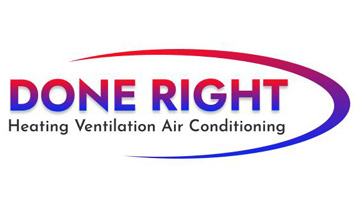
A furnace is often a background player for your home, keeping you warm in the cold winter months. It regularly won't be noticed until something breaks down.
One source might be that your furnace has a cracked heat exchanger. It can potentially be hazardous, so it’s critical to know the signs of a cracked heat exchanger and what you should do if you believe that might be the problem.
What Is a Heat Exchanger in a Furnace?
A heat exchanger transfers heat from the combustion chamber of your furnace to the air that circulates inside the ventilation. It generally accomplishes this via coils or tubes that heat the air while acting as a barrier to keep byproducts created in the combustion chamber, called flue gasses, from leaking out into your home.
Is a Cracked Heat Exchanger Dangerous?
Thanks to its central role, it’s no surprise that a damaged heat exchanger can be very dangerous. A damaged heat exchanger can allow dangerous gasses – such as carbon monoxide, which can be lethal – to flow across your home.
For that reason, never turn on your heating if you believe it has a cracked heat exchanger, as this could make the whole family sick. Call an HVAC professional as soon as possible if you think your heating has a cracked heat exchanger that should be repaired.
Four Signs of a Cracked Heat Exchanger:
- Furnace turns off: A crack in your heat exchanger can cause your furnace to shut off.
- Unusual Smells: If the air leaving your furnace has a powerful chemical scent, it may be an indicator that gasses are seeping through cracks in your heat exchanger. These byproducts, which may smell like formaldehyde, are a significant warning sign.
- Carbon monoxide alarm goes off or you recognize poisoning symptoms: If a cracked heat exchanger is emitting carbon monoxide inside your home, your carbon monoxide alarm could go off or family members may experience signs of carbon monoxide poisoning. Side effects include headaches, dizziness, weakness, nausea, vomiting or feeling drowsy. If an alarm goes off or you feel unwell, leave the home right away and then call for help.
- Soot: If you notice black sooty collecting around the exterior of your furnace, it’s an indication something may be seriously wrong.
What You Should Do if Your Furnace Heat Exchanger is Cracked
If you believe your furnace has a cracked heat exchanger, call a professional well versed in furnace installation Milwaukee as soon as possible so they can examine your system and, if necessary, start a furnace heat exchanger replacement. Costs often differ depending on the situation, but estimates can roughly suggest $1,000 to $3,000.
Estimates aside, the good news is that heat exchangers are generally included in the warranty. It's a good idea to confirm the warranty paperwork on your furnace, as while the warranty won't always cover the entire cost of repairs, it can significantly lower your bill.
How to Avoid a Cracked Heat Exchanger in Your Home
One of the easiest ways to avoid problems in your furnace overall is with regular furnace maintenance. Furnaces offer the most benefits when they run efficiently. Contacting a skilled professional to examine your furnace for broken-down parts, clogged filters and other common problems can keep you from getting a big bill later on.
It’s also helpful to take a look at your furnace filters every few months – it’s recommended some filters be replaced every 90 days or sooner if they are dirty or grimy. While the filters are not part of the heat exchanger itself, the strain of drawing air through a clogged filter makes your entire furnace work harder to complete its job. And the harder your furnace has to work, the more strain parts like the heat exchanger will sustain.
